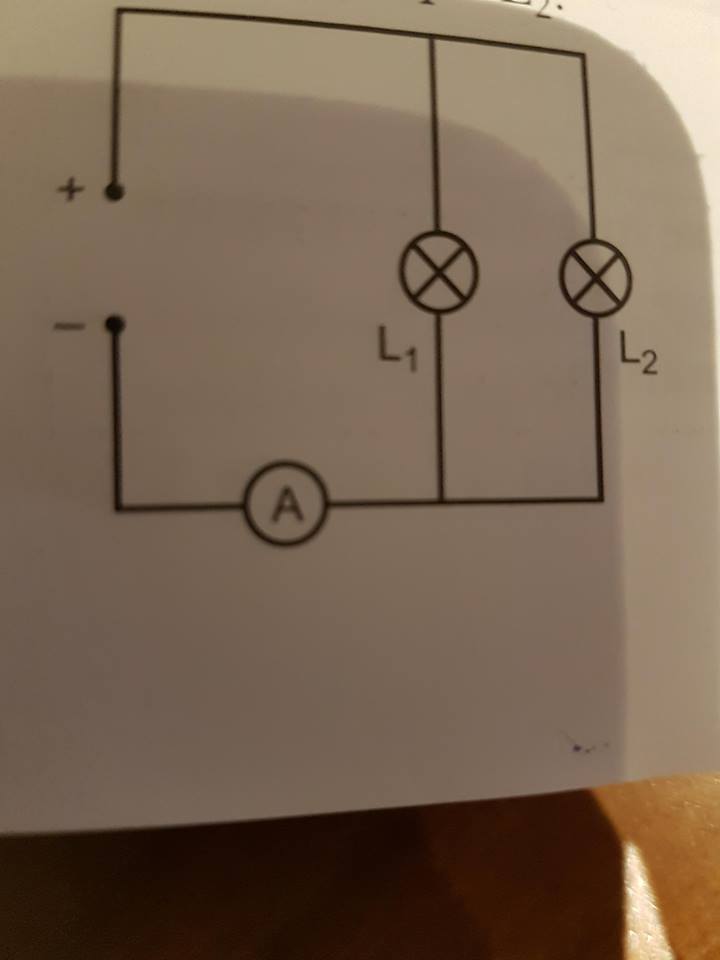Why will lamp 1 light as much as before if lamp 2 gets broken? And why will the ammeter show more current if lamp 2 is working?

1 Answer
Because it is a parallel circuit.
Explanation:
You need to understand the word "current" to understand what happens in this circuit. Think of a river. The word current is also applied to how water flows in a river and I am sure that you understand how it works with water in a river. Current is how much water goes past a certain point in a second (or other unit of time), right?
If there is an island in the middle of a river, the river has to split and go around the island. Imagine you could measure the current in the river upstream of the island and call that
The same thing happens with an electrical current. Electrical current is a measurement of how much charge ( charge is measured in Coulombs) go past per second. Look at the 2 branches available for the charges flowing in the wire. If you look straight up from L1, you see that charges arriving there from the power source + terminal have to decide whether to go down to L1 or go straight and follow the path to L2.
Unfortunately, the analogy is not as good when something happens to one of the branches. In a river, the water would back up and force its way thru the remaining branch. In an electric circuit, if the current stops in one branch, the current in the other branch continues without change.
Now I will try to answer your specific questions.
Why will lamp 1 light as much as before if lamp 2 gets broken?
The Lamp 1 branch is still available. The voltage applied from the source is still across the resistance of Lamp 1, so the same current flows.
And why will the ammeter show more current if lamp 2 is working?
When both lamps are working, both branches are conducting current. The ammeter is in the wire where both currents have to share the wire, like upstream of the island.
I hope this helps,
Steve

